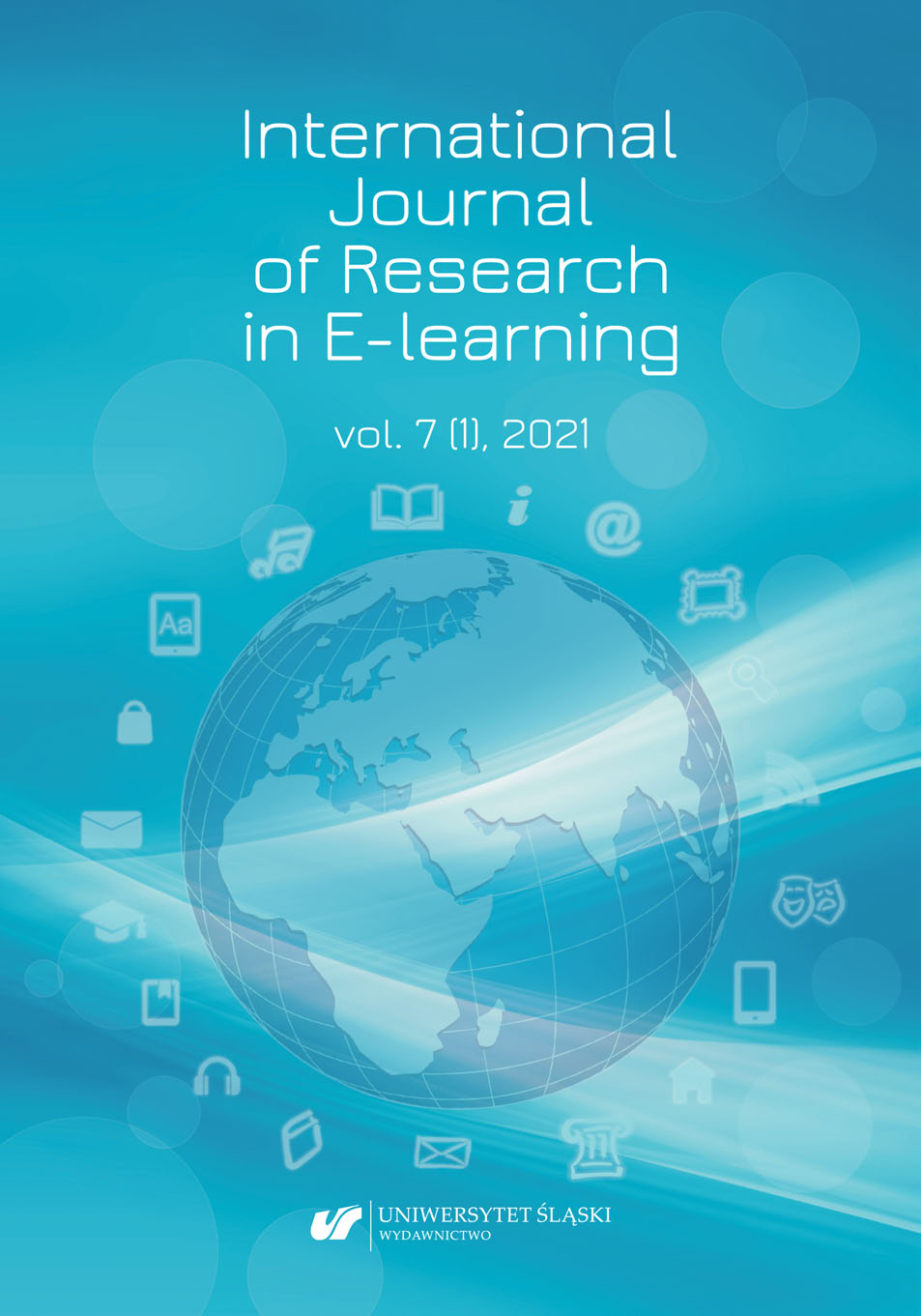Adam, S. (2004). Using learning outcomes. Report for United Kingdom Bologna Seminar, 1–2. Edinburgh.
Google Scholar
ANECA (n.d.). Retrieved from http://www.aneca.es/ (accessed 27.07.2019)
Google Scholar
Arias Masa, J. (2018). Ficha 12a de Interconexión de Sistemas curso 2017–18. Retrieved from https://www.unex.es/conoce-la-uex/centros/cum/informacion-academica/programas-asignaturas/curso-2018-19/plan1515/501440.pdf (accessed 27.07.2019)
Google Scholar
Arias Masa, J., Gutierrez-Esteban, P., & Hidalgo Izquierdo, V. (2006). Experiencia docente en la asignatura “Redes de Computadores” en la Universidad de Extremadura. Revista Latinoamericana de Tecnología Educativa – RELATEC, 223–233. Retrieved from https://relatec.unex.es/article/view/243 (accessed 27.07.2019)
Google Scholar
Arias Masa, J., Martín Tardío, M., & Martínez, L. (2004). Una experiencia en docencia virtual. RELATEC: Revista Latinoamericana de Tecnología Educativa, 315–331.
Google Scholar
BOE 4/2010 (2015). Boletín Oficial del Estado. Boletín Oficial Del Estado, 61561–61567.
Google Scholar
BOE 71/2009 (2009). Boletín Oficial del Estado. Boletín Oficial Del Estado, 61561–61567.
Google Scholar
CUM (n.d.). Retrieved from http://www.unex.es/conoce-la-uex/centros/cum (accessed 22.03. 2017)
Google Scholar
Curricula, C. (2005). The overview report. ACM IEEE Computer Society, 13, 17–30.
Google Scholar
Gómez Trigueros, I. M., & Ruiz Bañuls, M. (2018). Interdisciplinariedad y TIC: Nuevas Metodologías Docentes aplicadas a la enseñanza superior. Pixel-Bit, 52, 67–80.
Google Scholar
Gosling, D., & Moon, J. (2001). How to write learning outcomes and assessment criteria. Londyn, SEEC Office, University of East London.
Google Scholar
Guerra-López, I. (2007). Evaluación y mejora continua: Conceptos y herramientas para la medición y mejora del desempeño. United States of America. Bloomington, Indiana: AuthorHouse.
Google Scholar
ISO – International Organization for Standardization (n.d.). Retrieved from https://www.iso.org/home.html (accessed 27.07.2019)
Google Scholar
Kennedy, D. (2007). Redactar y utilizar resultados de aprendizaje: un manual práctico http://www.mecesup.cl/usuarios/MECESUP/File/2014/publicaciones/ResultadosAprendizaje2007.pdf. (accessed 27.07.201 9)
Google Scholar
Lara, E., Xavier, O., Guillén, V., Serral, R., Miquel, G., & Rosselló, F. (2011). Nivel de enlace y redes de área local. Barcelona: Eureca Media.
Google Scholar
Ministerio de educación y Ciencia (2007). Real Decreto 1393/2007, de 29 de octubre. Boletin Oficial Del Estado (BOE), 260, 1–25.
Google Scholar
Open systems interconnection (OSI) (n.d.). Retrieved from https://www.iso.org/ics/35.100/x/ (accessed 27.07.2019)
Google Scholar
Pallisera, M., Fullana Noell, J., Planas Lladó, A., & Valle Gómez, A. del. (2010). La adaptación al Espacio Europeo de Educación Superior en España: los cambios/retos que implica la enseñanza basada en competencias y orientaciones para responder a ellos. Revista Iberoamericana de Educación, 52(4), 1–13.
Google Scholar
Redalyc, L. A. T. I. N. D. E. X., Clase, R. E. V. E. N. C. I. T., & IN-COM UAB, S. E. R. B. I. L. U. Z. (2003). Berlin Declaration on Open Access to Knowledge in the Sciences and Humanities.
Google Scholar
Stalling, W. (2004). Comunicaciones y Redes de Computadores 7ed Stallings. Pearson Education.
Google Scholar
Tanenbaum, A. S., & Wetherall, D. J. (2012). Redes de computadoras Quinta Edicion. Mexico: Pearson Educacion.
Google Scholar
UEx. (n.d.). Retrieved from http://www.unex.es (accessed 20.03.2017)
Google Scholar
Universidad Politecnica de Madrid. (n.d.). Universidad Politécnica de Madrid. Retrieved from https://www.upm.es/Estudiantes/Estudios_Titulaciones/EstudiosOficialesGrado/ArticulosRelacionados?fmt=detail&prefmt=articulo&id=a98e7d7154320210VgnVCM10000009c7648a (accessed 8.01.2020)
Google Scholar


 https://doi.org/10.31261/IJREL.2021.7.1.07
https://doi.org/10.31261/IJREL.2021.7.1.07
